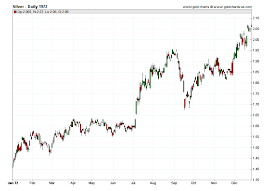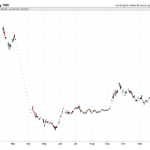Silver has long been a valuable commodity, prized for its versatility, beauty, and economic significance. Throughout history, silver prices have been subject to fluctuations and trends, impacted by a range of factors, including economic conditions, geopolitical events, and supply and demand dynamics. The year 1972 was no exception, with silver prices ranging from $1.37 to $2.03 per ounce, driven by a variety of factors that shaped the market.
Ironically, despite being widely regarded as a precious metal, silver prices are anything but stable, subject to volatile swings that can have significant implications for investors and traders. Understanding the factors that drive silver prices is essential for making informed investment decisions and managing risk.
In this article, we will examine the fluctuations and trends in 1972 silver prices, exploring the key factors that impacted the market and analyzing the historical data to gain insights into the behavior of this important commodity.
1972 Silver Price Overview
The overview of silver prices provides a comprehensive understanding of the fluctuations and trends in the 1972 silver market. During this period, silver prices fluctuated between $1.37 to $2.03 per ounce, with the highest price recorded on December 29.
The prices were influenced by various factors, including supply and demand, global economic conditions, and political events. Despite the fluctuations, the historical data on silver prices can provide insights into the silver market trends and future price predictions.
Investors and traders can use this data to make informed decisions about their investments in silver. However, it is important to note that the silver prices in 1972 were significantly lower than current prices. Therefore, investors should consider the current market conditions and consult with a financial advisor before making any investment decisions.
Factors Affecting Silver Prices
Factors such as global economic conditions and political events have a significant impact on the value of silver. Silver market volatility is also a major factor that affects the price of silver. In addition, the impact of currency exchange rates on the price of silver cannot be ignored.
The table below summarizes the factors that affect the price of silver:
| Factors | Description | Examples |
|---|---|---|
| Global Economic Conditions | Economic growth, inflation, interest rates | GDP, CPI, Fed Policy |
| Political Events | Geopolitical tensions, elections, policy changes | Wars, sanctions, trade policies |
| Silver Market Volatility | Supply and demand, investor sentiment | Mining production, industrial demand, ETF flows |
| Impact of Currency Exchange Rates | Relative strength of currencies, forex markets | USD, EUR, JPY, GBP, CNY |
Understanding these factors and their interplay is crucial for investors and traders who want to make informed decisions about buying and selling silver. By tracking these factors and monitoring daily silver prices, investors can gain insights into market trends and make strategic investment decisions. However, it is important to note that silver prices can be highly volatile and speculative, and should be approached with caution.
Historical Silver Price Analysis
Significant shifts in the value of silver have occurred over time, with some periods experiencing drastic changes in the worth of the commodity. Historical silver price analysis reveals that silver prices have fluctuated widely based on market influences such as supply and demand, economic conditions, and political events.
In 1972, for instance, the silver prices ranged from $1.37 oz to $2.03 oz, with the highest price recorded on December 29, 1972. The prices rose steadily from August to December, with fluctuations experienced in September. This historical data shows that silver prices are subject to sudden shifts based on market influences.
Understanding historical silver price trends is crucial for investment decisions. Investors can analyze the factors that have influenced silver prices in the past to make informed investment decisions in the future. Historical data can help investors to predict the future direction of the market, identify opportunities, and manage risks.
Daily tracking of silver prices is also important for investors and traders. They can use real-time data to adjust their investment portfolios, capitalize on market opportunities, and mitigate risks. Overall, historical silver price analysis is an essential tool for investors seeking to optimize their investment returns and minimize risks.
Frequently Asked Questions
What was the average annual income in 1972, and how did it compare to the price of silver?
The average annual income in 1972 was around $11,800, while the inflation rate was about 3.27%. Silver prices fluctuated during this period, with the highest price reaching $2.03 per ounce. There does not appear to be a strong correlation between silver prices and the stock market during this time.
What was the global demand for silver in 1972, and how did it impact the price?
The global demand for silver in 1972 was high, driven by its use in various industries. However, supply chain disruptions impacted the price, causing fluctuations. Objective analysis of historical data can inform investment decisions.
What were the primary uses for silver in 1972, and how did this affect its value?
Silver had various uses in 1972, including industrial applications such as photography and electronics, as well as jewelry and coinage production. These uses, along with production trends, influenced the value of silver.
What were the geopolitical events that influenced silver prices in 1972?
Geopolitical events such as the US dollar devaluation and the oil crisis, combined with economic factors like inflation and supply and demand, influenced the fluctuation of 1972 silver prices.
How did the inflation rate in 1972 impact the price of silver?
The impact of recession and inflation rate in 1972 on the price of silver as an investment option was significant. The value of silver increased due to its potential as a safe-haven asset amidst economic uncertainty and rising inflation rates.





